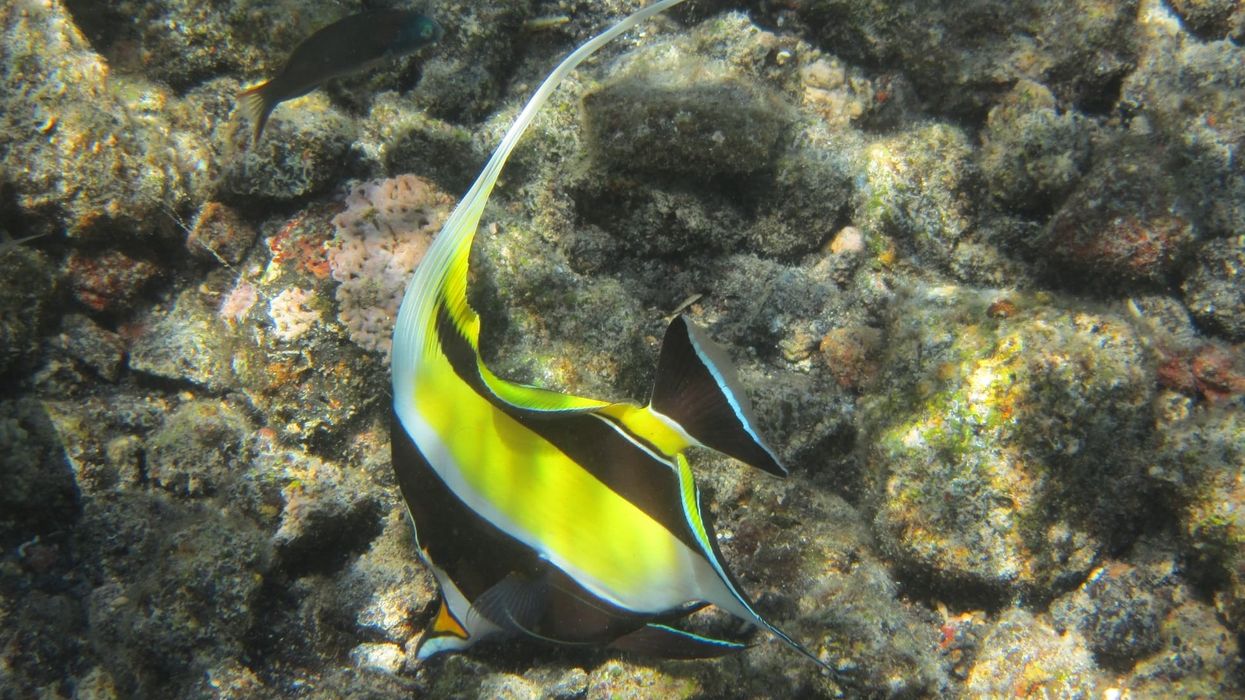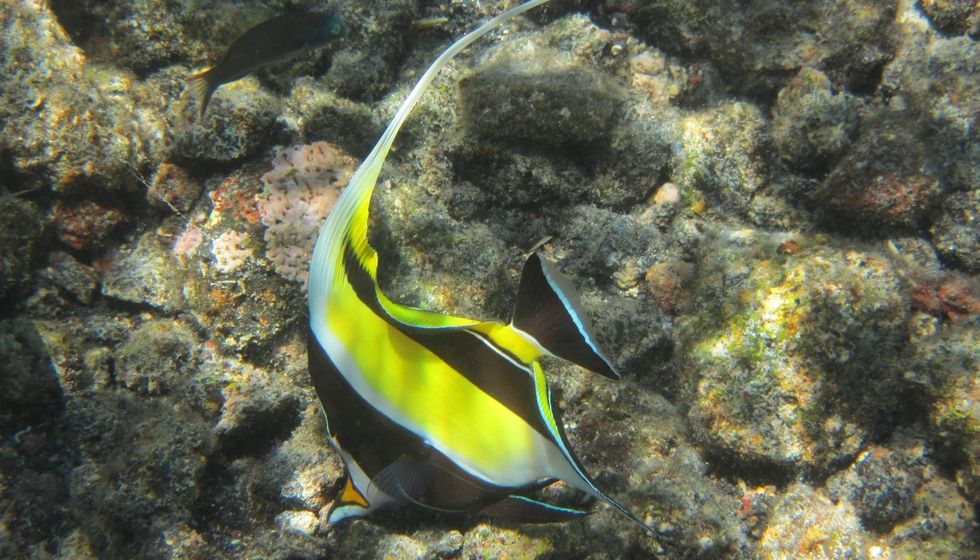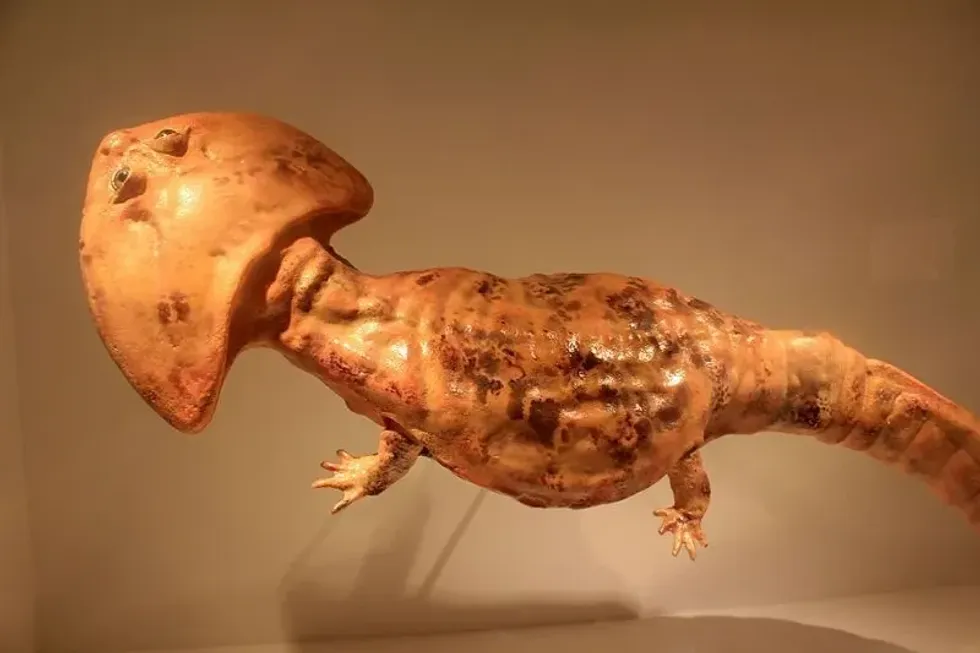The Moorish idol is a species of fish that is actually quite fascinating to read about. They are pretty shy fish and tend to stay away from other species of fish.
They have bars of black, white, and yellow on its body. It is actually similar to the angelfish as the coloration of both the fish are similar.
The population distribution of these fish is vast and spread all across the Pacific Ocean. They can be found in the tropical reef of the eastern and Indo-Pacific Oceans.
The Moorish idol diet consists of algae, small invertebrates, and they eat about two to three times a day.
Their reef habitat is being threatened by marine pollution. One of the adaptations of these fish is that they have unique color patterns that often confuse their predators and are used to protect themselves.
It is difficult to mimic their reef habitat in an aquarium as they can only survive in saltwater. It is ideal if this fish is left in the wild instead of keeping it in an aquarium as it has a better chance of survival.
To know more about some interesting fish, check out white cloud mountain minnow and danio.
Moorish Idol Interesting Facts
What type of animal is a Moorish idol?
The Moorish idol, scientific name Zanclus cornutus, is a species of fish.
What class of animal does a Moorish idol belong to?
The Moorish idol (Zanclus cornutus) is a species of fish that belong to the Actinopterygii class of animals like the Arctic char and the codfish, with their family being Zanclidae.
How many Moorish idols are there in the world?
There is no specific data available about the exact number of Moorish idols present in the world.
Where does a Moorish idol live?
The Moorish idol (Zanclus cornutus) fish live in the ocean. They are found in the Indo-Pacific oceanic region. The Zanclus cornutus can be found in countries like Japan, China, the Philippines, Australia, and along the coast of California. Their population is not threatened because of the fish being so widely distributed.
What is a Moorish idol's habitat?
Moorish idols are known to be shallow-water fishes, with these marine creatures mostly living in flat reefs. For those with the question of 'is a Moorish idol reef safe?', the answer is yes. In general, Moorish idols can be found at depths of approximately 1-590 ft (0.3-180 m).
Who do Moorish idols live with?
Zanclus cornutus are docile fish that can co-exist with other species of fish and larger invertebrates. They can often be seen in pairs or in large schools of their own species.
When they are in captivity, they tend to show aggression towards other fish if they see that their territory is being threatened. This, in turn, also makes them vulnerable to stress that is not healthy for the fish. Their lifespan in captivity decreases because of this as well.
How long does a Moorish idol live?
The Moorish idol lifespan is two to four years in the wild and a year in captivity.
How do they reproduce?
Not much is really known about the reproductive nature of Moorish idols. They tend to choose only one mate for life and are pelagic spawners in the wild.
They are unable to reproduce in captivity. The Moorish idols will release their eggs and sperm underwater. Their larva range is considered to be much more impressive than any other species of fish.
What is their conservation status?
According to the data from the IUCN Red List of Threatened species, the Moorish idol (Zanclus cornutus) is considered to be of Least Concern.
Moorish Idol Fun Facts
What do Moorish idols look like?

Moorish idols are considered to be relatively small fish with disk-like bodies. They are very shy fish and are unable to eat in front of other fish. They have bristle-like teeth with a long tubular month.
The body has contrasting bands of black and white with hints of yellow that can confuse its predators. The dorsal fin has bands of black, white, and yellow. The dorsal fin is considered to be larger than the other fins in its body.
How cute are they?
These fish are small and have a unique distribution of colors on their bodies which makes them so cute.
How do they communicate?
The males of these species are known to show aggression towards each other if they feel that their territory is being threatened. They are docile to other species of fish and can co-exist with them but have a short lifespan in captivity. They can barely survive a year.
How big is a Moorish idol?
These species of fish are relatively smaller than many different fishes, with a length of around 7-9 in (18-23 cm). They are often confused with angelfish, but the angelfish is relatively bigger.
How fast can a Moorish idol swim?
There is no specific data about how fast a Moorish fish can swim.
How much does a Moorish idol weigh?
The Moorish idol weighs 8-48 oz (227-1361 g).
What are the male and female names of the species?
There are no sex-specific names for the male or female of this species.
What would you call a baby Moorish idol?
A baby Moorish idol is called a juvenile.
What do they eat?
The Moorish idol's diet consists of algae, brine shrimps, and other small invertebrates. An interesting point to note in their diet is that they are shy eaters and do not like to eat in front of other fish. They tend to live along the tropical reef, and they can also be seen feeding on corals and sponges.
Are they dangerous?
No, these fishes are not dangerous.
Would they make a good pet?
These species of fish make a delightful pet but require a lot of care when kept in an aquarium. The aquarium must be cleaned, and the water can only be saltwater.
It is important to include other corals on the surface of the aquarium as these fish feed on them. They are unable to breed in captivity.
Even though they live in different parts of the ocean, their feeding habits are difficult to replicate.
They are also very shy in nature and are unable to adjust with their other tankmates if there is not enough space in the tank. The lifespan of a Moorish idol is barely a year in captivity as it becomes vulnerable to diseases and suffers from stress.
They tend to show aggression when the water level of the tank is low. Therefore, it is important to maintain a healthy water level where the fish is able to swim freely.
Did you know...
The Moorish idol was featured in the movie 'Finding Nemo' as 'Gill', the fish that damaged itself while trying to escape the tank.
A copperband butterflyfish is similar to the Moorish idol but is much more difficult to keep as they refuse to have any food that they didn't hunt or find.
What happens to a Moorish idol as it becomes an adult?
As these species of fish mature, they form a trailing streamer on the top of their head as a deterrent to their predators. Their colors also become brighter, which helps them camouflage from these predators. They also form bumps near their eyes that look like horns.
What happens to a Moorish idol's upper fin as it swims?
The upper fin trails along with the body of the fish as it swims along. The upper fin also helps them navigate where they are swimming.
Here at Kidadl, we have carefully created lots of interesting family-friendly animal facts for everyone to discover! Learn more about some other fish from our blue tang facts or yellow tang facts pages.
You can even occupy yourself at home by coloring in one of our free printable tang fish coloring pages.
Second image by Betty Wills.








